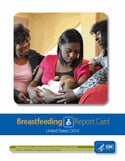©Recorded History of Breastfeeding
Nipple shields, or 'teats', have been around for hundreds of years. When mothers were faced with breastfeeding difficulties they historically opted to use a nipple shield to salvage nursing when weaning was eminent. These nipple shields were made of lead, pewter, tin, bone, horns, ivory, wood, silver and glass 5:
Between 1534 and 1790, problems with the breasts and nipples attracted much attention; particularly from surgeons and midwives, who were likely to be consulted when such problems arose 20,21,23,24. True during historical periods and for today as well, the major problem for breastfeeding women was sore and infected nipples. The types of problems which affected the nipples were: (a) soreness; especially in first-time mothers; (b) cracks, clefts and fissures in the nipples; (c) ulcers and loss of the nipples; (d) nipples obstructed or deformed by scar tissue caused from the nursing of a previous child. Various reasons were given for the apparent high incidence of sore nipples. Infants who suffered from conditions such as thrush, aphthae, and the pox (syphilis) heal. Another problem was a failing milk supply. Failing milk supply can be due to poor sucking in the infant caused by such factors as weakness, prematurity, low birth weight, and neonatal conditions such as jaundice. Another issue was that hungry children frustrated by getting insufficient milk or not getting the milk easily, were liable to bite and 'mum' the nipple. Whether or not the child had teeth, this led to sores, which eventually could develop, into ulcers and consequent loss of the nipple. Other writers blamed prolonged sucking, not sucking for several days, and small or scarred nipples, which frustrated the child.
Between the periods of 1534 to 1790, written evidence shows that a large number of mothers experienced great pain and suffering while breastfeeding their infants. There was also a high infant mortality rate during this period as well. Mothers were also dealing with psychosocial factors. Throughout history mothers have found ways of contending with these socio-culture uncertainties and environmental psychosocial stress. In order to combat adverse effects associated with breastfeeding; "wet-nursing" became an option for upper class mothers, hence making it necessary if not fashionable in 1676 through 1699. If those upper class mothers who decided to breastfeed their infants, (prefer not to pay for a wet-nurse to breastfeed their infant and breastfed their own) recognized that they were going against the cultural norm, and unless they were particularly self-confident and determined, might well have had to deal with considerable emotional strain from other mothers. So those women who attempted to go with their own inclinations and follow the natural ways of maternal breastfeeding were considered trouble 8.
It has been established that 'cultural confusion inhibits lactation', so that the problems of failing milk supply could have been a greater problem among wealthy woman before early 1700s. Late in the 18th century most physicians rejected the option of wet-nursing because of viral infection, and infectious diseases were hard to detect. They thought it difficult, if not impossible, to produce wet-nurses who were perfect physically and psychologically sound. These physicians did not put much stock in breast milk from wet-nurses
In fact, mothers themselves lead the brigade from the breast to wet-nursing, to using cow's milk, transformed into infant formula fed by bottle to their infants.20 These upper class mothers went to the physicians and insisted on help in the modification of the cows milk that they were using in place of wet-nurse to feed their infants because they were unable to bare the pain of breastfeeding. In fact all of these changes occurred during a time when women were viewed as second-class citizens, yet breastfeeding history was forever changed.
Surgeon's and the medical societies of that period were blamed for mothers who never attempt nursing or discontinue breastfeeding within the first two weeks. Implying that the medical community of the 19th and 20th century had not done their job in applying force (forced assistance) on mothers to breastfeed their infants. Doctors have a preference for the natural mother to nurse her own infant and have made this very clear in publications. For example "Every mother ought to nurse her own child, if she is fit to do it" 19,20 counseled the author of a 19th century home medical manual. Furthermore, he continued, "no woman is fit to have a child who is not fit to nurse it" 21,23 which was a commonly and strongly voiced public statement of the period by physicians.
A century later in a similar publication, L. Emmett Holt, Jr. comfortingly assured his readers, "under good medical guidance, a bottle mother may still be a perfect mother". This was the general consensus in the 1890's to the 1940's 20, 21,23 Hundreds of years had passed before mothers got their point across (ignored) from wet-nursing to cow's milk to infant formula.
Doctors finally conceded to mothers demands, coupled with the fact a high infant mortality rate was linked to mothers who were incapable of breastfeeding. It would seem that the doctors hands were tied, much in the same fashion as today based on breastfeeding statistics. Out of extreme circumstances, severe breastfeeding problems forced mothers to procure wet-nurses for their infants until ruled unsafe by physicians. Cow's milk eventually transformed into infant formula by doctors at the insistence of mothers, is how formula companies were born such as Nestle, Carnation to name a few.
This ushered in a new fashion called infant formula administered by bottle in the late eighteen hundreds. For medical practitioners, artificial feeding came to represent an important and lucrative aspect of their medical practice. Just as lactation consultants, midwives and the growing number of lactation centers of the 20th and 21st century have come to represent an important and lucrative aspect of lactation consultant's advocacy. It is important to note that mothers were the ones who changed the history of breastfeeding, as we understand it today, and continue to do so.
It is important to note that MOTHERS, ((((and not Surgeon's, medical societies or government))) pushed for an alternative way to feed their infants that ultimately changed the history of breastfeeding.
Breastfeeding Report Card, 2014 facts from the CDC
Division of Nutrition, Physical Activity, and Obesity
The CDC Breastfeeding Report Card provides state-by-state data to help public health practitioners, health professionals, community members, child care providers, and family members work together to protect, promote and support breastfeeding. The Report Card indicators measure types of support in key community settings as well as the most current data on the breastfeeding goals outlined in Healthy People 2020(http://www.cdc.gov/breastfeeding/policy/hp2010.htm).
Please note that the Breastfeeding Report Card will not be published in 2015. The Breastfeeding Report Card will now be published every two years; however, the breastfeeding data will be released on the DNPAO National Immunization Survey(http://www.cdc.gov/breastfeeding/data/nis_data/index.htm) Web page and on DNPAO's online Data, Trends, & Maps database. The updated rates, which reflect breastfeeding practices among U.S. infants born in 2012, are based on National Immunization Survey data from 2013 and 2014.








